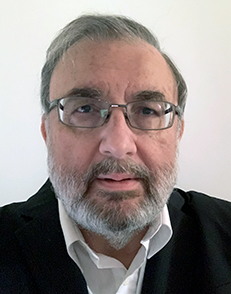*** Please note, each row and course# listed below is a separate, complete course. ***
Dynamic Viscoelastic Behavior of Rubber and its Products
| Course# | Date | Time | Location |
|---|---|---|---|
| 182-1520 | 09/07/2026 - 09/08/2026 | 8:00 AM - 4:00 PM | Microsoft Teams |
Online Registration
CEU's: 7.0
Instructor: Dr. Erol Sancaktar
Course Overview
This two-day course covers applications and performance of rubber components from the viewpoints of vibration isolation and damping and mechanical fatigue. For this purpose, the topics of dynamic viscoelasticity, types of vibrations (e.g., free, damped, forced, single/multi axes, etc.) are reviewed. Material properties, composition (e.g., fillers, plasticizers, crosslinkers, etc.), material testing, stiffness, viscosity, compression set, transmissibility, natural frequency, critical damping ratio, etc. are discussed. Vibration and fatigue testing methods are presented, including novel fatigue methodology recently developed and published by the instructor for application in tire rubber. These discussions include Payne and Mullins effects. Dynamic data analysis methods such as Sine Regression, Fourier Transform and Din Specification are described. Design for vibration isolation and damping, including design of Tuned Vibration Absorber are covered. A balance is maintained between the practical and theoretical aspects of rubber dynamic properties during the overall presentation. Expected audience includes design engineers, process engineers, product engineers, rubber compounders, chemists, laboratory managers, R&D scientists, technical service representatives and material suppliers. Limited design experience (very little to none) and low knowledge of tool design should be sufficient to benefit from this course.
Online Course Requirements
We want you to have a great experience participating in our remote (online) courses, and for that, you’ll need the right equipment and internet connection.
Minimum needs are:
- A broadband internet connection that has at least a 2 Mbps upload and download speed.
- A computer (PC or Mac) that can support the latest web browser versions.
- At least 4 GB of RAM and adequate hard drive space.
- A microphone and a speaker.
- International Students: For virtual (online) courses, an additional fee will be assessed to cover the cost of shipping the professional binder (presentation slides), to your address. The cost of international shipping can be significant.
For more information, visit our Online Course Requirements webpage.
Instructor Biography:
 Dr. Erol Sancaktar received his Ph.D. (Eng. Mechanics) and M.S. (Mech. Eng.) degrees from Virginia Tech. He is a Fellow of ASME and has served as Chair of ASME Tech. Committee on Reliability Stress Analysis, and Failure Prevention (1997-2008, 2013-present). He served as Associate Editor for the ASME J. Mech. Design (1995-2006) and Medical Devices (2006-2013). He was a faculty member at the Mechanical Eng. Dept. at Clarkson University during 1978 to 1996 before joining Univ. Akron in 1996 as Professor of Polymer Eng. He was also appointed Professor of Mechanical Eng. in 2009. Dr. Sancaktar currently holds the title, Professor Emeritus at the University of Akron’s School of Polymer Science and Polymer Engineering (since August 2020). Prof. Sancaktar edited 25 books and Journal Special Issues, authored 111 refereed journal articles, 30 articles in books edited by others, including 2 chapters in ASM Engineered Materials Handbook, as well as two chapters in Handbook of Adhesion Technology by Springer. He delivered 244 technical presentations and has 4 patents. Dr. Sancaktar organized 30 Conferences.
Dr. Erol Sancaktar received his Ph.D. (Eng. Mechanics) and M.S. (Mech. Eng.) degrees from Virginia Tech. He is a Fellow of ASME and has served as Chair of ASME Tech. Committee on Reliability Stress Analysis, and Failure Prevention (1997-2008, 2013-present). He served as Associate Editor for the ASME J. Mech. Design (1995-2006) and Medical Devices (2006-2013). He was a faculty member at the Mechanical Eng. Dept. at Clarkson University during 1978 to 1996 before joining Univ. Akron in 1996 as Professor of Polymer Eng. He was also appointed Professor of Mechanical Eng. in 2009. Dr. Sancaktar currently holds the title, Professor Emeritus at the University of Akron’s School of Polymer Science and Polymer Engineering (since August 2020). Prof. Sancaktar edited 25 books and Journal Special Issues, authored 111 refereed journal articles, 30 articles in books edited by others, including 2 chapters in ASM Engineered Materials Handbook, as well as two chapters in Handbook of Adhesion Technology by Springer. He delivered 244 technical presentations and has 4 patents. Dr. Sancaktar organized 30 Conferences.
Dr. Sancaktar served in 15 different Federal Government review panels and served as reviewer for numerous scientific research proposals, journal articles and books. He had over 18 consulting assignments, sabbatical and extended visits with various government agencies (i.e., NASA, U.S. Army), industrial establishments (Kendall Co., Chrysler Corp.), foundations and legal agencies, not counting one-day consulting/advising visits. Among these expert services was an over-billion-dollar case and expert witness testimony at the U.S. International Trade Commission (2017).
Prof. Sancaktar and co-workers obtained ~ $4M Research and Grant support with 56 projects during 1980-2022. These include 8 National Science Foundation grants (~ $1.1M and spanning over 25 years), 3 Teaching Grants and 20 projects sponsored by Industry.
Course Content Overview:
Section Titles:
Vibration Isolation and Damping Basics
Free Vibration with and without Damping
Concept of Shear
Viscosity
Viscoelasticity in Drag Flows / Applications with Rheometers
Dynamic Viscoelasticity
Dynamic Mechanical Analysis
Rubber Process Analyzer
Engine Mounts – Shape Factor
Vibration Isolation and Shock Absorption
Impact Excitation / Vibration Inputs
Vibration Damper Tests
Designing Tuned Vibration Absorber
Dynamic / Material Properties of Rubber
Material Testing
Tool Stiffness
Stiffness Measurement
Dynamic Data Analysis
Pre-strain
Dynamic-to-static Ratio
Mechanical Fatigue / Crack Growth
Isolator Adhesion
Rubber Processing
New Method of Fatigue Analysis
